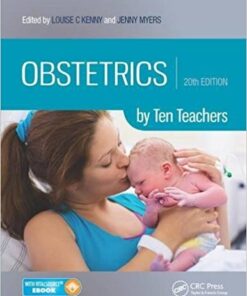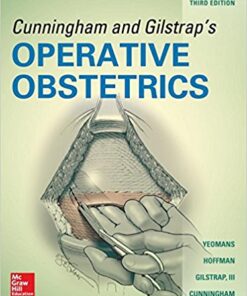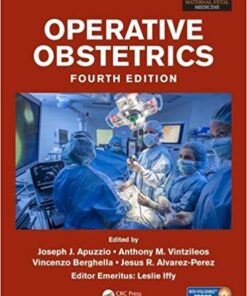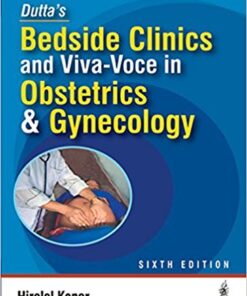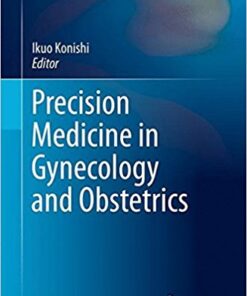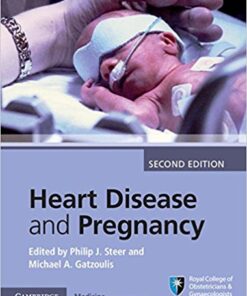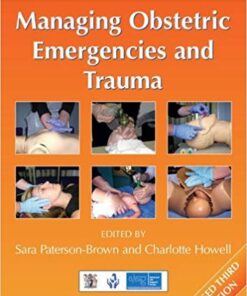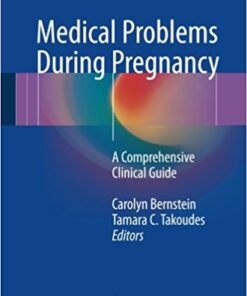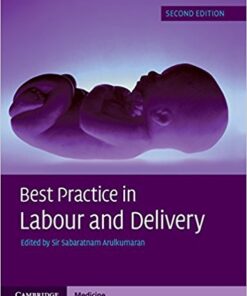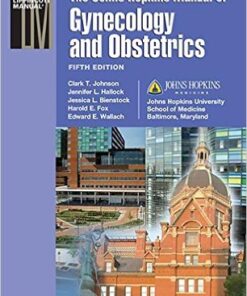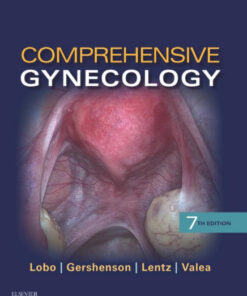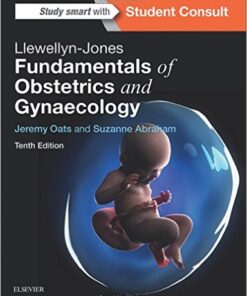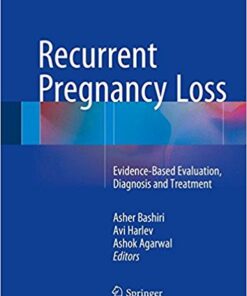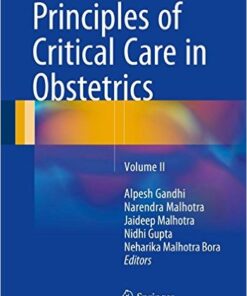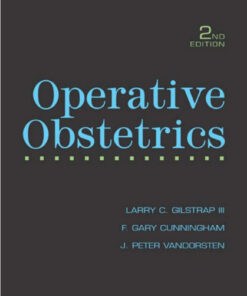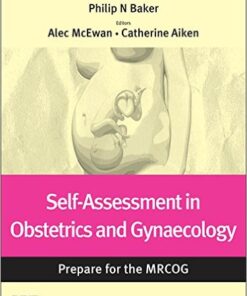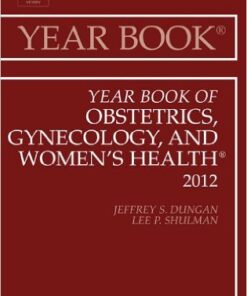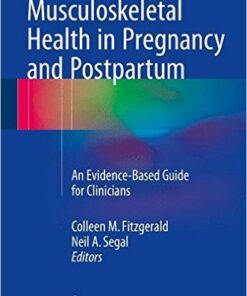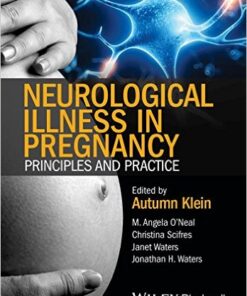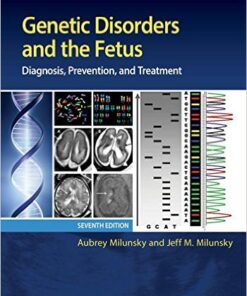GENERAL OBSTETRICS
Obstetrics by Ten Teachers, 20th Edition (Volume 2) 20th Edition PDF
GENERAL OBSTETRICS
Operative Obstetrics, 4E (Series in Maternal-fetal Medicine) 4th Edition PDF
GENERAL OBSTETRICS
Dutta’s Bedside Clinics and Viva-Voce in Obstetrics and Gynecology 6ED EDITION PDF
GENERAL OBSTETRICS
GENERAL OBSTETRICS
GENERAL OBSTETRICS
Medical Problems During Pregnancy 2017 : A Comprehensive Clinical Guide
GENERAL OBSTETRICS
GENERAL OBSTETRICS
GENERAL OBSTETRICS
Role of Folliculo-Luteal Function in Human Reproduction 2016
GENERAL OBSTETRICS
Management and Therapy of Early Pregnancy Complications 2016 : First and Second Trimesters
GENERAL OBSTETRICS
GENERAL OBSTETRICS
GENERAL OBSTETRICS
Johns Hopkins Manual of Gynecology and Obstetrics, 5th Edition
GENERAL OBSTETRICS
GENERAL OBSTETRICS
GENERAL OBSTETRICS
Llewellyn-Jones Fundamentals of Obstetrics and Gynaecology, 10e 10th Edition
GENERAL OBSTETRICS
GENERAL OBSTETRICS
Principles of Critical Care in Obstetrics: Volume II 1st ed. 2016 Edition
GENERAL OBSTETRICS
GENERAL OBSTETRICS
GENERAL OBSTETRICS
Year Book of Obstetrics, Gynecology and Women’s Health, 1e (Year Books) 1st Edition
GENERAL OBSTETRICS
Neurological Illness in Pregnancy: Principles and Practice 1st Edition
GENERAL OBSTETRICS
Genetic Disorders and the Fetus: Diagnosis, Prevention, and Treatment 7th Edition
Introduction
Understanding the basics of general obstetrics is essential for anyone who is expecting a baby or considering becoming pregnant. This article will provide an overview of the key concepts and topics related to general obstetrics, including prenatal care, labor and delivery, postpartum care, and common complications. We’ll also discuss the importance of finding a qualified obstetrician and what to expect during your visits. With this information, you can be better prepared for the journey ahead and make informed decisions about your pregnancy and childbirth experience.
Overview of Obstetrics: Definition, Scope, and Goals
Obstetrics is a medical specialty that focuses on the care of women during pregnancy, childbirth, and the postpartum period. It is a branch of medicine that deals with the management of pregnancy, labor, and the puerperium (the period immediately following childbirth). Obstetricians are medical professionals who specialize in providing comprehensive care to pregnant women and their newborns.
The scope of obstetrics includes the diagnosis and treatment of conditions related to pregnancy, labor, and delivery. This includes monitoring the health of the mother and fetus throughout the pregnancy, providing prenatal care, managing labor and delivery, and providing postpartum care. Obstetricians also provide counseling and education to expectant mothers and their families about the risks and benefits of various treatments and procedures.
The goals of obstetrics are to ensure the health and safety of both the mother and her baby. This includes providing quality care before, during, and after pregnancy, as well as promoting healthy lifestyle choices for the mother and her family. Obstetricians strive to reduce the risk of complications during pregnancy and childbirth, while also providing support and guidance to help the mother and her family make informed decisions about their care.
Obstetricians work closely with other healthcare providers, such as midwives, nurses, and pediatricians, to provide comprehensive care to pregnant women and their families. They also collaborate with other specialists, such as genetic counselors, nutritionists, and social workers, to ensure that all aspects of the mother’s and baby’s health are addressed. By working together, obstetricians can provide the best possible care for their patients.
Anatomy and Physiology of the Female Reproductive System
The female reproductive system is a complex and intricate network of organs, hormones, and other components that work together to produce and transport eggs, receive sperm, and create an environment for fertilization and development of offspring. It is composed of both internal and external structures, including the uterus, ovaries, fallopian tubes, cervix, vagina, vulva, and mammary glands.
The uterus is a hollow, pear-shaped organ located in the lower abdomen between the bladder and rectum. It is the site of implantation and growth of the fetus during pregnancy. The uterus is made up of two layers: the inner endometrium and the outer myometrium. The endometrium is the lining of the uterus that thickens each month in preparation for a fertilized egg. If fertilization does not occur, the endometrium is shed during menstruation. The myometrium is the muscular layer of the uterus that contracts during labor to help expel the baby.
The ovaries are two small, almond-shaped organs located on either side of the uterus. They produce and store eggs, as well as secrete the hormones estrogen and progesterone. Estrogen is responsible for the development of female secondary sex characteristics, such as breast development and body shape. Progesterone helps prepare the uterus for implantation of a fertilized egg and maintains the uterine lining during pregnancy.
The fallopian tubes are two thin tubes that connect the ovaries to the uterus. They act as a passageway for the egg to travel from the ovary to the uterus. Fertilization usually occurs in the fallopian tube.
The cervix is the lower, narrow portion of the uterus that connects to the vagina. It produces mucus that helps guide sperm to the egg. During childbirth, the cervix dilates to allow the baby to pass through the birth canal.
The vagina is a muscular tube that connects the uterus to the outside of the body. It is the passageway for menstrual blood, semen, and the baby during childbirth.
The vulva is the external genitalia of the female reproductive system. It includes the labia majora (outer lips), labia minora (inner lips), clitoris, urethra, and vaginal opening.
The mammary glands are located in the breasts and are responsible for producing milk after childbirth.
The female reproductive system works together with the male reproductive system to produce offspring. During sexual intercourse, sperm is deposited into the vagina, where it travels through the cervix and uterus to the fallopian tubes. If an egg is present, it may be fertilized by the sperm. The fertilized egg then implants itself in the endometrium of the uterus and begins to develop. If the egg is not fertilized, it is shed during menstruation.
Common Obstetric Procedures and Tests
Common obstetric procedures and tests are those that are routinely performed during pregnancy to ensure the health of both the mother and baby. These tests and procedures help to detect any potential problems or complications that may arise during the course of the pregnancy.
The most common obstetric procedure is an ultrasound. This test uses sound waves to create a picture of the baby in the womb. It can be used to determine the baby’s size, position, and gender. Ultrasounds can also detect any abnormalities in the baby’s development.
Another common obstetric procedure is amniocentesis. This test involves taking a sample of the amniotic fluid surrounding the baby in the womb. The sample is then tested for genetic disorders or other abnormalities. Amniocentesis is usually done between weeks 15 and 20 of the pregnancy.
Other common obstetric tests include blood tests, urine tests, and fetal monitoring. Blood tests are used to check for infections, anemia, and other conditions. Urine tests are used to check for protein, sugar, and bacteria in the urine. Fetal monitoring is used to measure the baby’s heart rate and movements.
Finally, there are several other tests and procedures that may be recommended by your doctor depending on your individual situation. These may include chorionic villus sampling (CVS), non-stress tests, and biophysical profiles. CVS is a test that takes a sample of cells from the placenta to check for chromosomal abnormalities. Non-stress tests measure the baby’s heart rate in response to movement. Biophysical profiles measure the baby’s breathing, muscle tone, and other factors.
Overall, these common obstetric procedures and tests are important for ensuring the health of both the mother and baby during pregnancy. They can help to detect any potential problems or complications that may arise during the course of the pregnancy. It is important to discuss any questions or concerns you have with your doctor before undergoing any of these tests.
Complications of Pregnancy and Delivery
Pregnancy and delivery are natural processes that the female body is designed to go through. However, there are a number of potential complications that can arise during pregnancy and delivery that can be dangerous for both mother and baby. It is important for pregnant women to be aware of these potential complications so they can take steps to reduce their risk.
One of the most common complications of pregnancy is preterm labor. This occurs when labor begins before the 37th week of pregnancy. Preterm labor can lead to premature birth, which can cause a variety of health problems for the baby. Other complications of pregnancy include gestational diabetes, preeclampsia, and placental abruption. Gestational diabetes is a type of diabetes that develops during pregnancy and can cause high blood sugar levels in the mother. Preeclampsia is a condition characterized by high blood pressure and protein in the urine. Placental abruption is a serious complication in which the placenta separates from the uterus before delivery.
During delivery, there are also a number of potential complications. These include shoulder dystocia, which occurs when the baby’s shoulder gets stuck in the birth canal. This can cause injury to the baby or the mother. Another complication is umbilical cord prolapse, which occurs when the umbilical cord slips out of the uterus before the baby. This can cause the baby to become deprived of oxygen. Other complications of delivery include postpartum hemorrhage, infection, and uterine rupture.
It is important for pregnant women to be aware of the potential complications of pregnancy and delivery so they can take steps to reduce their risk. Women should talk to their doctor about any concerns they have and follow their doctor’s advice. Regular prenatal care is essential for a healthy pregnancy and delivery.
Postpartum Care and Follow-up for Mothers and Babies
Postpartum care and follow-up for mothers and babies is an important part of the birthing process. It is essential to ensure that both mother and baby are healthy and thriving after the birth. Postpartum care includes physical, emotional, and psychological support for the mother and baby during the postpartum period.
Physical care for the mother includes monitoring her vital signs, checking for any signs of infection, and providing pain relief if needed. The mother should also be encouraged to rest and take time for herself. It is important to monitor the mother’s diet and nutrition to ensure she is getting enough nutrients to heal and recover from childbirth.
For the baby, postpartum care includes monitoring their growth and development, as well as providing immunizations and other preventive care. The baby should also be monitored for any signs of illness or infection. It is important to provide the baby with adequate nutrition and hydration, as well as a safe sleeping environment.
Follow-up care for both mother and baby is also important. This includes regular check-ups with the doctor or midwife to ensure that both mother and baby are healthy and progressing normally. Follow-up visits may include physical exams, laboratory tests, and other assessments.
Postpartum care and follow-up for mothers and babies is an essential part of the birthing process. It is important to ensure that both mother and baby are healthy and thriving after the birth. Regular check-ups and follow-up visits with the doctor or midwife are important to ensure that both mother and baby are progressing normally.
Conclusion
Understanding the basics of general obstetrics is essential for any healthcare professional. It is important to understand the different stages of pregnancy, the common complications that can arise, and the treatments available. By having a good understanding of these topics, healthcare professionals can provide better care for their patients and help them have a safe and healthy pregnancy. With this knowledge, healthcare professionals can ensure that their patients receive the best possible care during their pregnancy.

